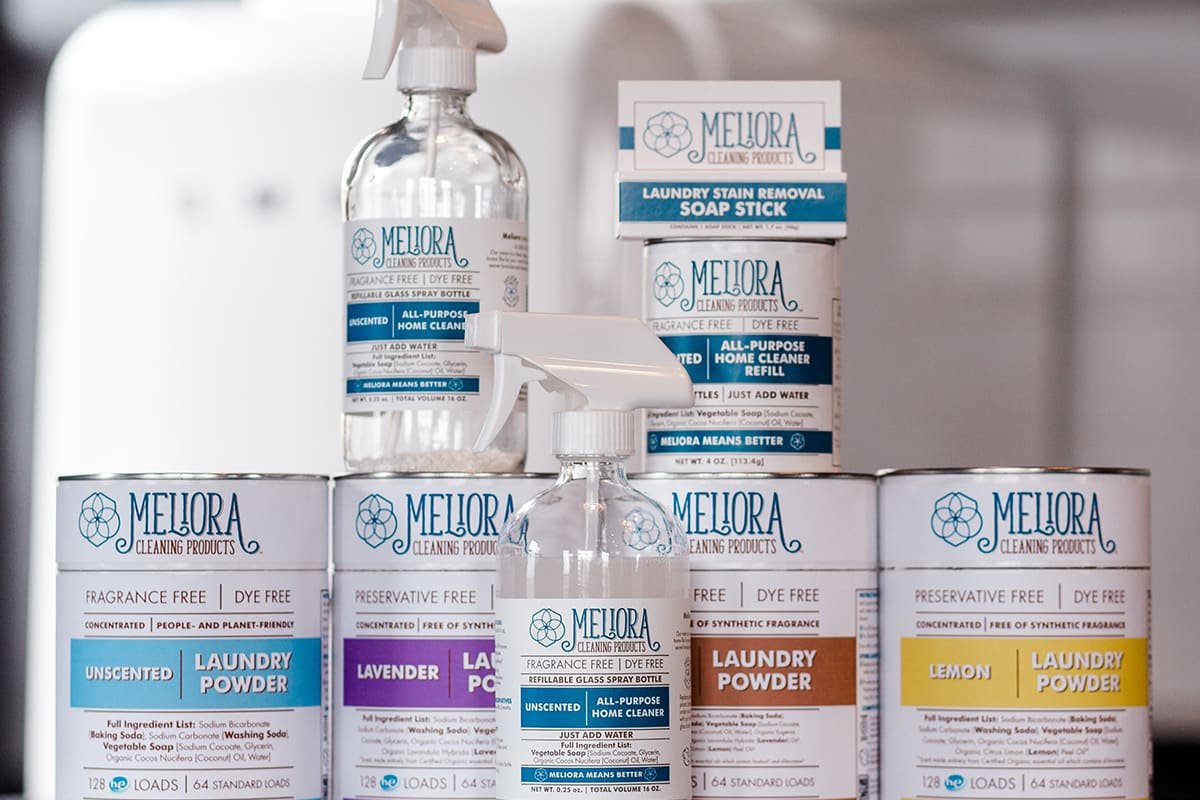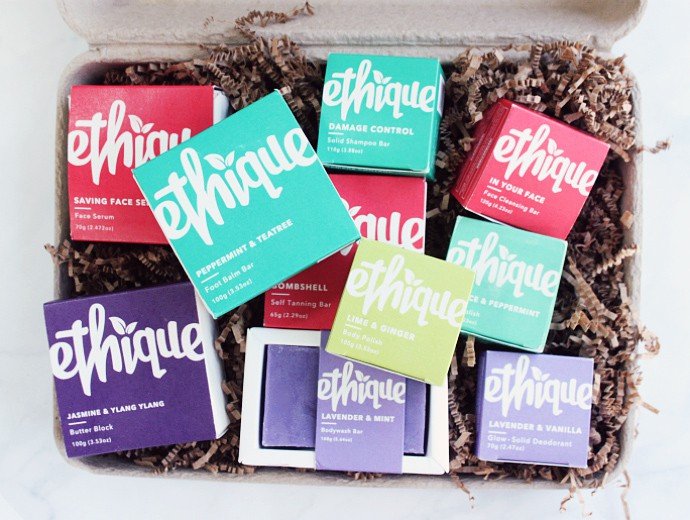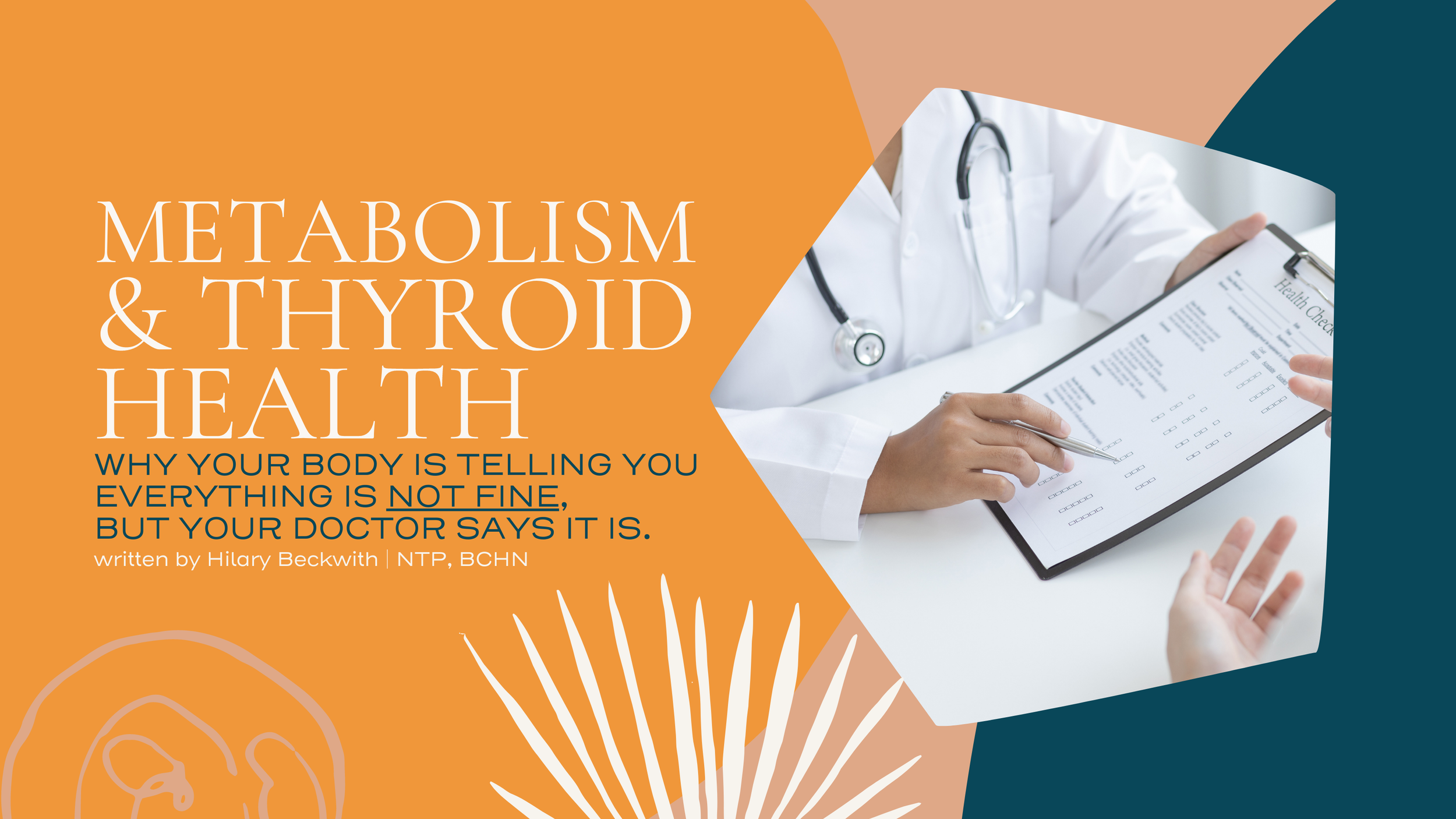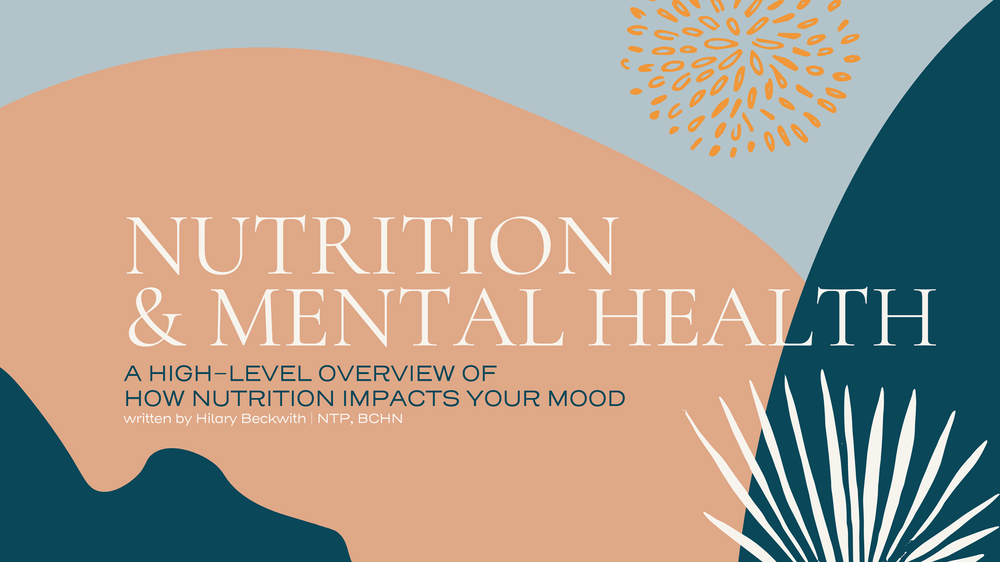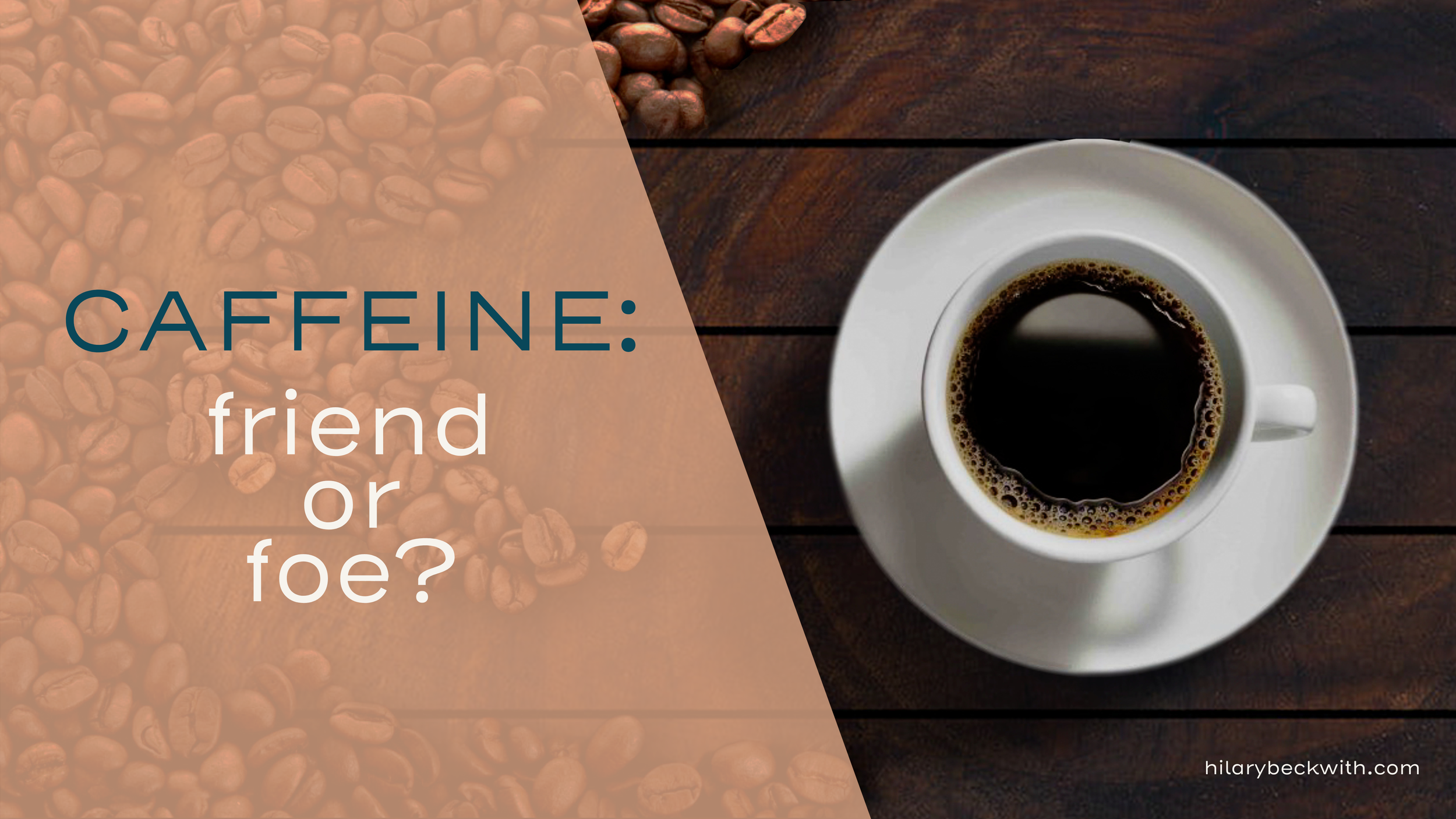My Favorite Earth Friendly Products
But since we’ve evolved into this highly convenient, single-use world, sustainable products are currently more of a novelty (and priced as such), and the opposite is considered “conventional” or “traditional”.
But we can change that.
One of the reasons we choose these “conventional” products that are typically more harmful, is because they are convenient, accessible, and affordable.
That’s hard to argue.
But again, it’s about aligning your actions with your beliefs. If you believe the Earth is worth celebrating on Earth Day, what are you doing to live that out on a daily basis?
earth day 2025
I am early to the Earth Day 2025 game (for once!).
Regardless of whether you are celebrating Earth Day 2025, or simply want more ways to align your actions with your beliefs, I am here to help you!
I am on my own journey of learning what products are feasible for my family to use that are more friendly to our bodies and to the planet.
Tried-and-true, the products I recommend below are items I use (or have used) in my own home in my efforts to save the world.
why change?
It’s difficult to argue that our lifestyles need to be more conducive to the health of our planet.
But since we’ve evolved into this highly convenient, single-use world, sustainable products are currently more of a novelty (and priced as such), and the opposite is considered “conventional” or “traditional”.
But we can change that.
One of the reasons we choose these “conventional” products that are typically more harmful, is because they are convenient, accessible, and affordable.
That’s hard to argue.
But again, it’s about aligning your actions with your beliefs. If you believe the Earth is worth celebrating on Earth Day 2024, what are you doing to live that out on a daily basis?
good, better, best
When it comes to choosing healthy foods or sustainable household products, we all need to consider many things such as:
affordability
time
beliefs about results
availability
other people in our home
allergies/sensitivities
religious restrictions
This is where the Good, Better, Best mindset comes into play. This is one of the many golden nuggets I teach to my clients working through the Cut the Crap course.
Point is, you do not owe anyone an explanation for your choice. You get to make those choices, having considered each of these factors, and choose the most feasible for you or your family.
It’s unfortunate that the word “conventional” equates to more harmful in most cases.
But we are all just trying to do our best, right?
And in my efforts to save the world for Earth Day 2025, I’ve tried a few products that I want to share with you that work well for me and my family.
**I have no affiliation with these products and companies. I just dig them and think you will too!
my favorite products for Earth Day 2025
FOOD STORAGE
Two of my favorite disposable food storage replacements have easily been Bee’s Wrap, and BioBag Resealable Bags.
Bee’s Wrap
This has been one of my favorite kitchen substitutes for plastic wrap. Not only is plastic film not recyclable in most city recycling programs, it releases harmful toxins into your food when heated.
This bee’s wax wrap is compostable, forms to the food or container, easy to clean, and you can buy it in pre-cut sheets, or a roll similar to plastic wrap.
BioBag
I’ve tried a lot of these compostable bag products, and BioBag takes the cake! The other brands I’ve tried have fallen apart so easily, but BioBag holds up.
We tried opting out of plastic baggies altogether, but that was not working well for our family. While I use them much less frequently now, opting for sealable glass dishes and jars, these bags are nice to have around.
**I still have not found a good compostable kitchen garbage bag I like (even BioBag doesn’t hold up well for larger kitchen containers). Please share in the comments if you have found one you like!
POWDERED DISH SOAP
For a long while, I was mostly concerned about what was in the dish soap that affected my body, and to some extent, the earth.
But as I’ve dug deeper into my beliefs over the past years, I recognized that, while your body’s health is important to consider, there are these nuanced ways in which these “healthy” products are still causing a lot of harm.
In my case, it was recognizing the amount of plastic being used to package my now “healthy” dish soap choices.
So, for a hot minute I tried two different types of solid dish soaps from Package Free that I did NOT like. They were messy, smelled horrible, and were expensive.
I gave solid dish soaps a solid try, and they were a solid no-go for my family.
But Blueland changed all that with their powdered dish soap. It smells like nothing, cuts grease, suds up nicely, is not messy (when I opt to use the silicone dispenser bottle they also provide)… it’s a win in my book!
TABLET REFILLS FOR VARIOUS SPRAY CLEANERS
I’ve seen many of these begin to pop up, and the ones I’ve tried have been great.
It’s worth noting here that just like with food, just because something claims to be “healthy” does not mean it is. These are not all created equal (remember when we thought Subway was healthy?).
The brands I’m recommending here are good quality and well sourced. I believe that, in conjunction with sustainability, is what makes them the superior choice. Not the mere fact that they prevent plastic usage.
Here are the ones I’ve tried and love:
Meliora All-Purpose Cleaner (I only recently learned about this company and now want to try ALL of their products)
HAND SOAP, BODY WASH, and SHAMPOO
The truth is, I have a hard time with this one.
Certainly the plastics from liquid soap refills are not planet-friendly, even if the soap is.
And I don’t know what it’s like in your home, but I find that thanks to our heavily manufactured world, even supposedly earth-friendly soap dispensers are cheaply made and I end up tossing those out often, anyways.
So, my recommendation here is old-school - bar soap.
I’ve even found some that are packaged in earth-friendly boxes or paper and do not use plastic film to wrap them.
If you’re local to the Pacific NorthWest, PCC (a local co-op) carries many options, including its own brand.
But my favorite that I’ve been using recently is called Ethique. They make body soaps, face, hand, and shampoo.
PAPER PRODUCTS
I know families who go through paper towels by the Costco pack every two weeks.
We use things like paper towels, toilet paper, and cotton swabs, because they are convenient, disposable, and keep us from having to touch gross things.
Not only are many of these conventional products made with unsustainable products, but they are treated with harmful chemicals like chlorine bleach, in manufacturing.
And have you noticed they are nearly always wrapped in plastic film?
Interestingly… did you know that products like Kleenex tissues don’t break down like toilet paper? They are often filled with things like lotions and products that prevent them from doing so, and are not even supposed to be flushed down the toilet.
The increasing production of more bamboo (highly sustainable) and cotton (biodegradable) products to replace these has grown over the past few years, and I’ve tried a few…
Here are some of my favorites:
Caboo Bamboo Paper Towels - They make other products like toilet paper, but I prefer a different brand that I’ll recommend below.
Who Gives a Crap Toilet Paper - Wrapped in planet-friendly packaging. They also sell paper towels and facial tissues (and give back to the environment and communities)
UNPaper Towels - The brand I purchased long ago, and have been using ever since, no longer seems to be available. This link is to a brand I have not tried, but don’t be afraid to search around for a good quality product.
Cotton Handkerchiefs - My partner and I bought these in order to make masks at the beginning of the COVID pandemic, and ended up loving using them instead of disposable tissues. I’ve not purchased a single box of Kleenex in years.
Bamboo Q-Tips - For a hot minute, we tried nixing the disposables altogether, and opting for reusable Q-tips until the end of one fell off in my ear and instigated an Urgent Care trip to get it out. Think Good, Better, Best, my friends.
Paper Q-tips - These are also a great alternative to the illusive reusable Q-tip I mentioned previously. So long as you find a product made with organic cotton, this is a great alternative to the plastic compound used in conventional (read Q-Tip Brand) Q-Tips.
LAUNDRY SOAP, FABRIC SOFTENER, AND DRYER SHEETS
As we discussed earlier in the dish soap, it’s difficult to package liquid products in planet-friendly containers.
So, to celebrate Earth Day in more meaningful ways, here are some sustainable laundry products I’ve tried.
Nellie’s Lamby Dryerballs - Wool felted dryerballs have replaced fabric softener AND dryer sheets in our home. Plus, they dry your clothes more efficiently by agitating them. I like this brand, but even better would be talking to your local sheep farmers about getting some from them!
TruEarth Laundry Soap Sheets - After trying three different brands, I liked this one the best, and it comes in planet-friendly packaging (whereas brands like Earth Breeze still come in a plastic container for larger amounts). **These work far better in a top-loading washer than they do in a front loader, where they tend to not dissolve completely.
Meliora Oxygen Brightener Powder - comes in paper packaging, as opposed to other brands I’ve seen in most stores (looking at you, OxiClean). A great replacement for chlorine bleach, although it is not a disinfectant. (Try hydrogen peroxide for that)
Nellie’s Wow Stick Stain Remover - As simple as it gets, this is a solid stick similar to chapstick (but without the plastic packaging). And the best part? It works! Have been using this for several months now, and love it.
Ready to save the world?
Or at the very least, are you ready to align your actions with your beliefs by making small changes to your lifestyle in celebration of Earth Day 2025?
Yeah you are…
was this helpful?
What are some of your favorite sustainable products?
Share your favorites in the comments below!
NUTRITION SERVICES
MORE RESOURCES
Your Thyroid Symptoms Are Correct - What Your Body is Actually Telling You (and why your doctor says “everything is fine”)
Why aren’t the test results showing anything is off? And more importantly, how do you find relief for your thyroid symptoms if you don’t know what the problem is?
Your doctor is technically right - the numbers are “within reference range.” Where your doctor has it wrong, is only testing for one factor (and not looking into the big picture).
Thyroid symptoms
Chances are, you are here searching for solutions to your thyroid symptoms, because your doctor is telling you “everything looks fine.”
But you know that everything is not fine.
Your body has been telling you for a while that something is wrong.
Why aren’t the test results showing anything is off? And more importantly, how do you find relief for your thyroid symptoms if you don’t know what the problem is?
Your doctor is technically right - the numbers are “within reference range.” Where your doctor has it wrong, is only testing for one factor (and not looking into the big picture).
It’s not their fault. Allopathic doctors are trained to look at a number on test results, and if it is outside the “reference range,” provide treatment to get the number back to its rightful place.
They are not trained to look into why the number is off. Organizations like insurance companies, and the American Medical Association (AMA) set oversimplified guidelines that keep us from getting the big picture.
For example, the only numbers required to diagnose for hypothyroid, are TSH (Thyroid Stimulating Hormone) and T4 (inactive Thyroid Hormone). These two numbers will only show as abnormal once there has already been damage to at least 90% of your thyroid. We need more information to really understand why you have thyroid symptoms. But your doctor is simply following the rules that were set for them by these entities.
I’m not here to sh*t on your doctor, or allopathic medicine in general.
But it’s important to consider what we might be missing out on by staying “in the box”.
Adding a functional or holistic practitioner to your healthcare team is the best way to ensure you will get down to the root cause of your thyroid symptoms, enabling you to more effectively address your health.
examples of thyroid symptoms
So, how do you know if you have thyroid symptoms?
**Much of the information in this article has been taken from the Thyroid Debacle, although additional research has also been provided where needed.**
You might be here because you’ve been told you have hypothyroid (sluggish, or low thyroid function), hyperthyroid (overactive thyroid), or an autoimmune disorder such as Hashimoto’s Thyroiditis or Grave’s Disease.
Or maybe you’re here because you’ve been struggling to lose weight, you feel you have a slow metabolism, and your Google searches have told you it may be your thyroid.
Let’s first figure out if you’re in the right place.
HYPO-THYROID SYMPTOMS OFTEN LOOK LIKE:
weight gain, difficulty losing weight
constipation
depression
fatigue (frequently tired for no apparent reason)
dry skin
coarse hair
brain fog
poor circulation, sensitive to cold
reduced libido (low sex drive)
HYPER-THYROID SYMPTOMS OFTEN LOOK LIKE:
irritability
anxiety
nervousness
insomnia
increased heart rate
heart palpitations
fatigue
unexplained weight loss
increased sweating, heat intolerance
increased appetite
tremors
where is the thyroid located?
To understand the cause of your thyroid symptoms, we first need to understand what the thyroid is and does.
The thyroid is a small butterfly-shaped gland, on the front (anterior) side of the neck, at the base. It is responsible for regulating cellular metabolism, which is the chemical processes required for cells to maintain life, by creating energy.
The thyroid acts in response to stimulation from the hypothalamus and pituitary gland, collectively known as the HPT axis.
Here’s a brief overview of how this works:
Hypothalamus (brain) senses the need for energy, releases TRH (Thyrotropin Releasing Hormone)
TRH tells the Pituitary to release TSH (Thyroid Stimulating Hormone)
TSH stimulates production of T4 (thyroxine, the inactive form of thyroid hormone) by the thyroid gland
Some T4 is converted to T3 (triiodothyronine, the active form of thyroid hormone) within the thyroid, but mostly this conversion happens within the tissues and cells where it is used
Most T3 and T4 are bound to a protein called thyroglobulin and circulate throughout the body until needed. Unbound, or free, T3 and T4 are able to bind to receptors and be used when needed.
T3 is required for many functions, but in regards to your metabolism, it is required for the transport of glucose into a cell in order to make ATP (Adenosine TriPhosphate: the energy our cells use to function).
thyroid symptoms in females
It is commonly thought that if our metabolism is slow, it is because our thyroid is not producing enough T4. Whether that is because our HPT axis is disrupted, our pituitary gland is not working properly, or the thyroid itself is not functioning well.
That can be the case, however, more research is coming to light that our metabolism slows due to a cellular response to a stressor. It is even thought that in cases of autoimmune disease, wherein the body attacks the gland itself, this may be a protective mechanism in effort to slow metabolism at the source (the thyroid).
Since TSH falling outside of the reference range is a sign of end-stage thyroid dysfunction, it’s important to look at other factors when thyroid symptoms arise, before TSH becomes abnormal.
The good news is, if we are paying attention to the queues in the form of thyroid symptoms, and we have the support of a practitioner trained to look at the WHY, we can address these factors before much damage occurs.
So, what are cellular stressors?
There are many types of cellular stressors: parasite infections, fungus/yeast, bacterial overgrowth, heavy metal toxicity, environmental toxins, emotional stressors, physical trauma or injury, low oxygen, even poorly regulated blood sugar, to name a few.
Each one of these stressors triggers our fight or flight response. Our brain shuts down anything not essential to dealing with the stressor, including digestion and tissue repair. Additionally, it tries to preserve energy for the cells and tissues involved in the stressor, by slowing processes that require energy, such as metabolism.
When the stressor is left unaddressed, it becomes chronic, causing a cell danger response, in which:
Cell walls stiffen, in order to prevent the transfer of nutrients across cell walls
Cells send out signals for help, such as cytokines, and DAMPs (damage associated molecular patterns), and PAMPs (pathogen associated molecular patterns), triggering an immune response.
In an effort to preserve energy, cells deactivate T3 at the cell by activating an enzyme called deiodinase-3
Putting it altogether, thyroid symptoms are not always caused by the thyroid gland itself. Very often, thyroid symptoms are caused at a cellular level in response to unaddressed stressors.
Knowing this, you can see how it could be ineffective to treat it at the thyroid gland, with treatments such as thyroid hormone replacement and nutrients to support thyroid hormone production. These things are necessary sometimes, but without addressing the underlying stressors, those treatments will be ineffective long-term.
So, how can we reduce cellular stressors?
how to reduce thyroid symptoms
Stressors such as pathogens, parasites, heavy metals, toxic burden, or micro-organisms must be evaluated with lab testing. Very often these stressors can be eliminated with a strategic holistic approach to diet, lifestyle, and tissue repair, in addition to nutrients and binders to eradicate the infection and remove it from the body.
This type of evaluation and support needs to be done under the supervision of a qualified practitioner.
But there are many other things you also can do on your own, that will help support your stress response, and reduce thyroid symptoms.
Digestive Health - supporting your “rest and digest” response when eating will go a long way to ensuring you are digesting food well, and preventing pathogens from infiltrating your gut. Eating while seated at a table, no screens, and chewing your food adequately will help you enjoy food more, but also reduce cellular stress.
Respiratory Health - Respiratory health is essential to getting oxygen to our cells, and removing waste. Low oxygen is a common cause of cellular stress. There are many apps and programs designed to improve your passive breathing technique. The ability to breathe in and out through your nose while walking at a fast pace for 20 minutes, is a sign of good respiratory health.
Toxic Burden - Switching to a diet rich in whole foods, especially from sources that do not use synthetic pesticides, herbicides, or fungicides, will drastically reduce toxic burden on your body. If you’ve heard the phrase, “you are what you eat,” take it from a holistic nutrition expert, it’s TRUE! It’s also true that “you are what you eat, eats.” This can be a challenging switch to do all at once, so I do not recommend a cold-turkey switch. Here is a terrific resource for those wanting some support in walking through this transition.
Emotional Health - There are many ways to support emotional health, and thankfully our society is beginning to reduce stigma on the use of professional therapists. I strongly urge anyone to visit a qualified mental health specialist, whether or not you think you “need” it, as a way to gain tools to help you deal with all of life’s challenges.
Emotional Health and Thyroid Symptoms
Some other techniques to support emotional health, are:
Keep a gratitude journal - every night before bed, write down three things you are grateful for, big or small.
Acknowledgment practice - Every day, write three things you acknowledge your self for, big or small.
Thought Download practice (my personal favorite) - daily or weekly, set a timer for 5 minutes, and write EVERY thought that enters your mind. After the timer, read what you wrote, and cross off everything that is not actually true. For the thoughts that ARE true, write why they are true. Your brain will surprise you every single time.
Physical Fitness - You do not need to be a gym rat to be physically healthy. Find 20 minutes in your daily routine to do some intentional movement. Whether it’s walking, weightlifting, jumping jacks, yoga, tai chi, dancing in the kitchen, whatever - make it intentional and do it every day.
Get Tested - Find a qualified Holistic Practitioner who can provide testing for underlying pathogens, infections, inflammation, and other underlying burdens, then work with them to eradicate the stressors. These types of stressors can be very sneaky and look like digestive symptoms, skin issues, allergies, or cardiovascular issues, causing us to address the wrong thing.
Prioritize Sleep - Quality sleep is necessary for tissue repair and immune health. During the day, our brain produces toxins as a natural byproduct of metabolism. During quality sleep, our glial system (our brain’s immune system) is activated, flushing out these toxins, and preparing your brain for the next day. Without quality sleep, these toxins build up, affecting memory and brain function, and create a cellular stress response.
so, what?
Are you feeling the frustration of having thyroid symptoms, but your doctor keeps telling you nothing is wrong?
There is hope, friend.
It’s time to find a provider who will listen to your needs, and who cares about finding real solutions for your long-term health.
Hilary Beckwith is a Nutritional Therapy Practitioner, Board Certified in Holistic Nutrition, and is trained to get at the root cause of your thyroid symptoms, to help you feel like yourself again.
No more band-aid fixes.
NUTRITION SERVICES
MORE RESOURCES
Nutrition and Mental Health - How and What You Eat Has a Direct Impact on Depression and Anxiety
The relationship between nutrition and mental health is tied more closely than you may have previously thought. Acknowledging and addressing mental health has been more widely advocated in the past few years (thankfully!), but there has not been much emphasis on the interdependency between nutrition and mental health.
Nutrition and Mental Health
This article was written primary by Hilary Beckwith, in collaboration with Satya Wellness Collective, a mental health clinic in Seattle.
The relationship between nutrition and mental health is tied more closely than you may have previously thought. Acknowledging and addressing mental health has been more widely advocated in the past few years (thankfully!), but there has not been much emphasis on the interdependency between nutrition and mental health.
While it may be generally known that our mental health closely influences the types of food we want to eat, whether we want to eat at all, and how much we eat, what is often overlooked is how food affects our mood and general wellbeing.
Luckily, more and more research is demonstrating that the food we eat has a direct impact on our mental health.
let’s take a closer look
AMINO ACIDS & MENTAL HEALTH
One of the key components of nutrition and mental health is making sure you are getting the nutrients you need to support healthy neurotransmitter and hormone production, both of which greatly influence mood, anxiety, and food cravings. When you don’t get the nutrients you need, you may experience cravings for foods that are typically stripped of nutrients, perpetuating the cycle of poor nutrition, which negatively impacts mental health.
Let's look at a few examples of nutrients, specifically amino acids, that support optimal mental health:
Amino acids, which are proteins in their smallest forms, are the precursors to many neurotransmitters that impact our mood and mental wellness. The best way to ensure we are getting adequate amino acids is by regularly consuming a wide variety of quality proteins, like eggs, quinoa, nuts, seeds, green leafy vegetables, and properly raised meats, poultry, and fish.
Here are some important amino acids and the role they play in mental health:
Tryptophan is a precursor to serotonin, which helps us feel motivated, satisfied, and prevents worry. You may be low in serotonin if you commonly feel anxious or depressed, or crave afternoon carbohydrates.
Tyrosine is a precursor to catecholamines ((kata-KOHL-uh-meens), such as adrenaline and cortisol, that when released at appropriate times, help us handle stress and to feel awake. Someone who commonly needs coffee to feel awake in the mornings, or craves sweets for an energy fix, may be low on catecholamines.
Glutamine is needed to maintain the health of the digestive tract, and can help reduce sugar cravings, and symptoms associated with poor blood sugar regulation, like irritability, brain fog, and feeling shaky.
GABA, or Gamma-AminoButyric Acid, is known as the "calming" neurotransmitter. It is derived from Glutamine (amino acid) and it is helpful in relieving symptoms of anxiety, stress, and fear.
D-Phenylalanine is a precursor to hormones called endorphins, which are known to reduce pain, help manage stress, and give a sense of well-being. One who struggles with anxiety, chronic pain, or craves food as a reward, may have trouble producing endorphins.
Vitamin B6 & Zinc are not amino acids, as you probably guessed, but they can be highly supportive in regards to nutrition and mental health, as well. People who suffer from social anxiety, are often found to be deficient in these two nutrients.
Practitioner grade forms of these supplements can be purchased directly from my online dispensary. **I do not condone the use of supplements without the supervision of a qualified health professional.
DIGESTION & MENTAL HEALTH
When it comes to nutrition and mental health, how we eat is just as important as what we eat. Your eating habits and atmosphere impacts your digestion of food, assimilation of nutrients, and your emotional relationship with food.
As we learned in previously discussing amino acids, we need to be sure we're consuming a wide variety of quality protein to ensure we are getting the amino acids needed to support neurotransmitter production. Equally important is your digestive ability to properly break down those proteins into amino acids. Mindful eating supports the digestive process, enables you to enjoy food more, and increases awareness of how you feel when you eat. Mindful eating is one of the most effective way to address your nutrition and mental health.
Here are my favorite mindful eating techniques:
Sit down to eat (your car and desk do not count!): When you eat while multitasking (driving, working, cleaning, studying, and even cooking), your body is using its sympathetic nervous response (ie. "fight or flight"), and intentionally inhibits the digestive process. Sitting down with your meal keeps you grounded while you eat, and helps trigger and maintain your parasympathetic nervous response (ie. "rest and digest"). As a bonus, relationships with those who surround you during meals, will improve with your presence.
Deep breaths: This is especially important if your meal is the only calm in a busy day. Before you take your first bite, take five slow, deep breaths, in through your nose, and out through your mouth. This helps your body flip that switch from "fight or flight," to "rest and digest."
Chew your food: This may seem obvious to you, but it's often underestimated. Adequate chewing is not only important to our enjoyment of the food, but it helps us to better know when we are full, and supports the stimulation of adequate stomach acid and digestive enzymes needed to digest your food. There is no magic number of "chews." I recommend chewing until your food becomes liquid. If you feel the need to "wash down" your food, you are not chewing enough.
Minimize beverages with your meals: Liquids, especially low-caloric liquids, like black coffee, water, or tea, will dilute stomach acid and digestive enzymes in your stomach. It's important to minimize fluids like these while eating, to less than 6 ounces, if any.
how blood sugar affects mental health
BLOOD SUGAR & MENTAL HEALTH
One last important factor in addressing nutrition and mental health is eating to support blood sugar regulation.
Think of a time when you experienced low blood sugar. How did you feel in that moment? Did you feel irritable? Unwell? Shaky? Tired? Did you lose the ability to focus?
Eating to support blood sugar balance, not only prevents chronic illnesses like diabetes and cardiovascular disease, it also improves mood, and helps us feel more grounded, even when we are hungry.
Poor blood sugar balance often looks like:
High energy after consuming carb-heavy meals or snacks (“sugar high”), followed by a sudden drop in energy about 2-3 hours later
Feeling excessively hungry, or unwell when you don’t eat
Irritability when hungry
Shaky when hungry (this is adrenaline being released in response to stress)
Loss of focus when hungry
Optimal blood sugar balance looks like:
Steady energy throughout the day
Ability to recognize when you’re hungry without feeling shaky, irritable, or unwell
Staying full for longer periods of time
Improved mood and focus
Ability to handle a sweet treat without the consequences of poor blood sugar balance
So, how do you eat to support optimal blood sugar balance?:
Choose whole, or minimally processed foods as much as possible.
Focus on quality proteins, fats, and vegetables. Whole grains, fruits, or starches should be eaten in smaller amounts.
Examples of Quality Proteins: pasture raised poultry and eggs (light and dark meats), grass-fed beef, pork from rooting pigs, cold water wild-caught fish, wild-caught seafood, quinoa, lentils, grass-fed dairy products, nuts, seeds, high protein vegetables (broccoli, asparagus, brussels sprouts, artichokes)
Examples of Quality Fats: Olives, Extra Virgin Olive Oil, Unrefined coconut oil, nuts/seeds/butters, grass-fed full fat dairy, avocados, egg yolks, sardines
Use Mindful Eating techniques, previously discussed
Other techniques to support insulin sensitivity and adrenal response to blood sugar, can include intermittent fasting techniques, and Ayurvedic herbs known to support the HPA axis (Hypothalamus, Pituitary, Adrenal). My favorite product for this is called HPA Adapt, by Integrative Therapeutics (also available through my online dispensary).
It should be noted that intermittent fasting and supplementation should only be done under the direction and care of a qualified practitioner.
want to explore more about your own nutrition and mental health journey?
More information about my work with nutrition and mental health, and how I can help you, can be found on my website.
Interested in working with Hilary? Click here to book a free consultation.
Want to share your experience with nutrition and mental health? I would love to hear it (and it may help others looking for answers)! Please share your thoughts in the comments below.
NUTRITION SERVICES
MORE RESOURCES
Is Caffeine Bad For You? The Effects of Caffeine on Health, Fitness, and Digestion
For decades, caffeine has been marked as a villain.
But more recent information has shed light on the true effects of caffeine on health, and we’re finding it’s not as bad as we once thought. In fact, there was never a lot of evidence to support that it WAS bad.
So, is caffeine bad for you? Is caffeine good for you?
The answer:
It depends.
Is Caffeine Bad For You?
For decades, caffeine has been marked as a villain.
But more recent information has shed light on the true effects of caffeine on health, and we’re finding it’s not as bad as we once thought. In fact, there was never a lot of evidence to support that it WAS bad.
So, is caffeine bad for you? Is caffeine good for you?
The answer:
It depends.
I know, I know… I’m sorry.
But I will not leave it there.
I’m here to help you figure it out, so hang in there.
The reality is, the health effects of caffeine (we will be looking at coffee, as well), vary from person to person, depending on their biochemical makeup.
I’m going to walk you through the research and help you make the decision for yourself, whether or not caffeine is a healthy choice for your bod.
Let’s dig into it.
health effects of caffeine
Many people I know think of coffee when they think of caffeine. Caffeine is also in sodas, energy drinks, supplements, and some medications.
It’s safe to say we generally think of caffeine as a “pick me up”, right? A tool to help you feel more energized, more awake.
And that’s generally what it does.
But the specific mechanisms and chemical effects of caffeine go a bit deeper than that.
In order to help you decide whether caffeine is a healthy addition to your routine, it’s a good idea to understand these components better.
caffeine 101
HOW DOES CAFFEINE WORK?
Our brains produce a neurotransmitter called adenosine, which is released after stress or trauma, in order to restore tissues. It also has the ability to make us feel tired, because the restoration of these tissues increases our need for sleep.
So, we tend to have more adenosine in our system at the end of a long (and stressful) day, and some still remains when we wake up, making it a little hard to get going in the mornings.
Caffeine works by blocking adenosine receptors, and releasing cortisol and adrenaline, causing us to feel more awake (and also jittery) for a time.
But that’s not all caffeine does. Take a look.
OTHER HEALTH EFFECTS OF CAFFEINE
Caffeine promotes calcium release into the blood. Calcium causes muscle contraction, or excitation, whereas adenosine regulates blood flow and cardiac rhythm.
Knowing that caffeine consumption is generally associated with temporarily increased heart rate and blood pressure, this component makes a lot of sense.
This increase in muscle contraction could also explain the increase in rectosigmoid motor activity (movement of colon muscles), which is why coffee often triggers a bowel movement shortly after consuming.
Caffeine inhibits creatine uptake into cells. If you’re keen on the fitness world, you may have heard that creatine is a precursor to Adenosine TriPhosphate, or ATP, which is the energy our cells create in order to function. (Oddly enough, Adenosine is not a direct precursor to ATP)
So while it gives you a temporary boost of “awake,” consuming caffeine long term will inhibit your body’s ability to make energy.
Caffeine inhibits Nitric Oxide release into blood vessels. Nitric Oxide, or NO, is stored in blood vessels, and is released to increase blood flow by way of vasodilation (widening of the blood vessels), in order to transport more nutrients and oxygen to peripheral tissues.
One common scenario for NO release, would be any type of workout. Exercise requires the increased use of oxygen and nutrients, and therefore uses NO to help transport those components to the tissues that need it most during your workout (heart, lungs, or any muscle group you are targeting).
Caffeine increases fat oxidation during exercise (burns fat).
Caffeine temporarily increases Blood Pressure & heart rate, and yet daily coffee drinkers have lower instances of hypertension (high blood pressure) and heart attack.
Caffeine triggers the release of cholecystokinin, a hormone that stimulates the release of bile into the digestive tract. Bile is necessary to digest fats, and to remove toxins from the body.
Caffeine increases dopamine and serotonin levels.
Caffeine interferes with GABA receptors. GABA is a neurotransmitter, known to calm the adrenals after a stress response. GABA and melatonin are released more heavily in the evening time to help us relax and get more restful sleep.
How much caffeine is in coffee?
Caffeine in supplements, sodas, & energy drinks is easy to measure, because it’s deliberately added as a dosage.
But did you know that caffeine in coffee is WIDELY varied, and greatly depends on the method of roasting and brew? It is incredibly difficult to know exactly how much caffeine is in coffee, and scientific research is FAR outdated at this point, and no new studies have been published in the last couple of decades.
The good news is, my friends over at Golden Ratio did a little testing of their own, and it’s super interesting. Check it out!
health benefits of coffee
Coffee, whether caffeinated or not, can also have some impact on health, so I think it’s worth it to also look at those factors.
EFFECTS OF DRINKING COFFEE:
Stimulates the release of digestive enzymes and stomach acid.
Contains tryptophan. Tryptophan is an amino acid, the smallest form of protein, and is the precursor to serotonin. Serotonin is helpful for mood, motivation, anxiety, and obsessive thoughts.
Reduces Lower Esophageal Sphincter (LES) pressure, preventing heartburn, or acid reflux. The LES is located where the esophagus (tube in the throat that takes food to the stomach) meets the stomach. It works meticulously to relax and contract at certain times to allow food into digestion, and to keep food and enzymes out of the esophagus.
Reduces inflammation. Coffee is loaded with polyphenols, compounds that have an immense antioxidant impact. Highly unstable free radicals bounce around our tissues, causing damage to other cells, and thus, tissues. Our body responds, as it should, with inflammation, trying to heal the tissues. Antioxidants stabilize the free radicals, and provide them a way out of the body, thus reducing inflammation.
Has a protective effect on liver cells and against some cancers.
Tastes amazing! (reference: my tastebuds)
so, is caffeine bad for you?
HOW IT ALL ADDS UP
So what does it all mean? How do I know whether or not caffeine is good for me?
Let’s put the pieces together.
CAFFEINE & ADENOSINE: Having an extra “pick me up” isn’t always a bad thing. But because adenosine is responsible for regulating sleep, immune function, and cardiac rhythm, it might be a good idea to not inhibit those processes, or at least to be cautious of the timing of your caffeine consumption.
Adenosine also regulates mechanisms needed for psychiatric disorders. If you suffer from anxiety, depression, or mood disorders, caffeine may not be a good idea.
Alternative “pick me up” techniques:
Hydrate: Water consumption increases blood flow, which can help you feel more energized.
Walk: Take a quick walk around the block or do a quick set of jumping jacks. Exercise, even mild exercise, releases endorphins and provides a lift in your spirits.
B-Vitamins: There are many components of energy production, but B-vitamins are a huge factor, and many people do not get enough in their food. You can purchase my favorite B-Vitamin supplement here.
CAFFEINE & CORTISOL (and Fat Burning): Based on research referenced earlier, we now know that a strong dose of caffeine about 30 minutes prior to a workout will increase fat burning. However, cortisol also triggers the release of glucose in the blood from storage forms.
Why does that matter? Because if glucose is present, your body will prioritize glucose over fat, for energy production.
This is not inherently a bad thing, but it should be carefully considered. And if fat burning is your main goal, consider using proper intermittent fasting techniques with your workouts, or adding a l-carnitine supplement to your routine, to enhance the use of fats for energy production.
CAFFEINE & NITRIC OXIDE: NO is known to increase workout endurance and muscle power, due to its effect on oxygen distribution to peripheral tissues.
Not only does caffeine inhibit NO, but caffeine in itself is a vasoconstrictor, meaning, it temporarily narrows blood vessels, increasing blood pressure, and decreasing flow.
If you are looking to build a lot of muscle, or are training for endurance, caffeine is going to inhibit your training.
Instead, to support NO production, consider an l-arginine supplement, or my favorite Nitric Oxide supplement, called Neo40 Professional. Both can be purchased here.
COFFEE/CAFFEINE & STOMACH ACID/GUT MOTILITY: You’d be surprised how many of my clients struggle to produce enough stomach acid and digestive enzymes. So a little support with coffee ain’t always a bad thing. CLICK HERE TO READ MORE ABOUT THE EFFECTS OF DRINKING COFFEE ON AN EMPTY STOMACH
However, it’s important to recognize that many people consume coffee first thing in the morning, on an empty stomach (yep, I’m talking to you…). The stimulation of hydrochloric acid (the same stuff Dahmer used to dissolve body parts…) & digestive enzymes into an empty stomach… well, I probably don’t have to tell you what that could look like (helloooo, painful ulcers!).
If you simply MUST have coffee without food in the morning:
For one, I am curious to know why you are not hungry in the morning. While it might seem normal for you, it’s not a normal body function, and we can look into that together through my Reclaim Your Health program.
Second, remember the Bulletproof coffee craze? Well, turns out this technique is really helpful for folks who refer to coffee as “breakfast.”
If you are drinking coffee on an empty stomach, protect your gut from painful ulcers (among other digestive issues) by adding grass-fed butter, unrefined coconut oil, or even better, MCT oil. These types of fats have little effect on your blood sugar but give your stomach acid something to break down (other than the lining of your gut).
what are your thoughts?
Is caffeine bad for you, really? Is it healthy to consume caffeine?
Tell me how you put the pieces together, and how you use caffeine (or avoid it!) in your routine.
Share your experience & thoughts in the comments below.
NUTRITION SERVICES
MORE RESOURCES
Hydration Pack and Hydration IV - How Much Water Should I Drink?
You've heard it a thousand times: drink more water. But that begs the question, “how much water should I drink?”.
It's been pounded into your brain through health blogs and fitness influencers, and you do it!
You drink TONS of water.
And that feels good, right? (Well, except for all the bathroom trips)
After all, it can be difficult to create new healthy habits, so drinking more water seems like a super simple & easy way to improve our health.
But what if simply drinking more water isn't really what's helping us?
I love fall. Like, LOVE, love.
And not because of pumpkin spice everything, or comfy flannels & boots, or the excuse to constantly sip a warm beverage (although I love most of those things!).
I love fall because it's a time to shed what's old, what's damaged, what's no longer serving us, in order to make room for new growth.
We often hear Spring referred to as the time for new growth, but no one talks about what has to occur to make room for that growth - (enter: FALL!)
Don't get me wrong, I live for the cooler weather and the crisp air (and the warm beverages!).
But anyone who knows me knows I am a huge advocate for getting rid of what is no longer serving you. Not covering it up, not adding to it. But throw that sh*t in a pile and light. it. up!
What does that have to do with hydration? Wondering how much water should I drink? Looking for hydration packs and hydration IV support?
Let's talk about it.
You've heard it a thousand times: drink more water. But that begs the question, “how much water should I drink?”.
It's been pounded into your brain through health blogs and fitness influencers, and you do it!
You drink TONS of water.
And that feels good, right? (Well, except for all the bathroom trips)
After all, it can be difficult to create new healthy habits, so drinking more water seems like a super simple & easy way to improve our health.
But what if simply drinking more water isn't really what's helping us?
What if all those extra trips to the bathroom are all for naught?
This healthy habit may not be serving you the way it once was. It may be time to reevaluate this habit, and make room for something better, more effective.
To make room for new growth.
Are hydration packs the answer? Is a hydration IV the key to better hydration?
In honor of our dear friend, Fall, let's toss out that old idea that drinking more water will make you healthier. Let's make room for a new, better lifestyle change - hydration!
how much water should I drink?
What is hydration?
When we talk about hydration, it's best to think of it as cellular hydration. Proper balance of fluid between the insides of your cells (intracellular fluid, or ICF) and the outside of your cells (extracellular fluid, or ECF) is necessary for many body functions:
influences volume of blood
elimination of waste
blood pressure regulation
influences flow of bile
transfer of nutrients across cell membranes
proper nerve impulses
influences lymphatic flow (think, immune system and drainage of excess fluid)
provides "cushion" of protection around organs, and joints
So, does simply drinking water hydrate our cells?
Not really.
Drinking lots of water, without considering the necessary components to actually hydrate your tissues, will quite literally just go in one end, and out the other.
There's a little more to it than that, but in the end, the fix is still pretty simple (more on that later).
Here's where I get a little science-y, but stick with me...
In order for proper fluid balance to occur, osmosis needs to occur. Fluid can flow freely (does not need special transport channels) across the cell membrane, but it will only do so using osmotic force, meaning the fluid will only flow in order to equalize the concentration of solute particles (electrolytes) in the fluid (known as osmolarity).
Put more simply, your body will redistribute fluid as needed in order to maintain osmotic balance, even if that means taking fluid from areas that need it. It will move fluid from places of lower electrolyte concentration, to places of higher concentration.
Your kidneys are pivotal to this process. They are responsible for eliminating excess fluid and electrolytes and retaining them when necessary.
Here is a great example of this that you are more familiar with:
Typically speaking, potassium (one type of electrolyte) likes to hang out in the fluid inside of cells, while sodium (another electrolyte) likes to hang in the fluid outside of cells. When a diet is high in sodium, and low in potassium, the cells get dehydrated and shrivel, because the concentration of electrolytes in the ECF is greater than the concentration in the ICF.
This leads to an excess of fluid in the ECF (remember this stands for extracellular fluid), ie. edema. So if you know someone whose ankles regularly swell, and their doctor has told them to eat less salt, this is why, friends.
But salt (or sodium, rather) is not the only culprit here, so let's not get stuck on that. Lots of things impact this fluid balance and thus impact hydration. This is where hydration packs and hydration IVs might be of support.
Let's take a look at the factors of dehydration:
dehydration factors
caffeine + alcohol: Both of these things are considered to be toxins by our liver. When they are ingested, the liver prioritizes their elimination above most other liver functions. In order for the liver to process anything for elimination, blood needs to be able to effectively flow through the liver. Consuming too much caffeine and/or alcohol without properly hydrating, will inhibit the liver's ability to remove them from your body.
high sodium diet/low potassium diet: as we discussed earlier, these two electrolytes strongly influence the balance of ICF to ECF. Typically speaking, a high sodium diet naturally IS low in potassium, but it's not mutually exclusive. Remember, sodium is not the villain - it is necessary for many functions, but we need to be careful to balance.
sweat: Sweat is an important part of our body's ability to eliminate toxins and cool our bodies when they are too warm. But, when we sweat we also eliminate electrolytes, which, as we said, are important to the fluid balance of the body. It's perfectly fine (and in fact, important!) to sweat a LOT, but only if you are careful to replace fluid and electrolytes that are lost.
diarrhea + vomiting: Okay, these can't always be helped, right? But they are significant causes of fluid loss. If there are foods that you know your body is reactive to in these ways, don't consume them. Period. And if you do find yourself kneeling at the throne, be sure to replace those fluids and electrolytes that get flushed (more on how to do that later in the post).
So, what's the fix?
This is what you came for, my little muffin top.
Here are 4 ways to get hydrated, & stay hydrated:
Drink more water (duh!) - Unless you have kidney dysfunction, or are on certain medications, most people need to drink at least half of their body weight, in fluid ounces of water, every day.
Eat (lots of) mineral-rich foods - Eating a wide variety of locally seasonal foods is the best way to get all of the nutrition you need to support your body. But minerals, specifically, are found abundantly in foods like whole, sprouted grains, legumes, dark leafy greens, avocados, and seeds.
Move your lymph - Lymph is important to moving excess fluid out of the body, and there are lots of ways to get it moving regularly. Drinking enough water is the first, but also dry brushing, trampoline jumping, & deep breathing are all effective at moving lymph.
Take an electrolyte supplement - If you've been with me for any amount of time, you know that you cannot supplement your way out of a poor lifestyle (read that again). But for those who need a little extra temporary support (such as those who cannot digest mineral-rich foods well, don't have access to those foods, or are currently deficient in electrolytes), this electrolyte supplement is my favorite.
was this helpful?
How do you stay hydrated? Share your thoughts in the comments below!
NUTRITION SERVICES
MORE RESOURCES
